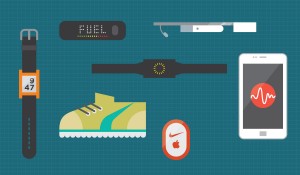The Net (Part 1)
The plot goes something like this – Sandra Bullock plays a computer expert Angela Benett, her life changes when she is sent a program with a crazy glitch to ‘de-bug’. Soon she finds out some vital government information on the disk, things gets nutty as fruitcake, her life becomes a nightmare with her records getting erased and she is given a new identity of some chick with a criminal record. That was 1995 and now it’s the end of 2013, imagine if something like this was possible back then, what can be done now.

Today, each one of us has so much personal digital data flowing out there that it is possible for someone to steal an entire online identity and cause real damage offline.
You already know that your personal information and references to your social media presence on Facebook, LinkedIn, Twitter, Instagram, Flickr etc. are all over google. This is the data that you know about and it is just a fraction of what can be unearthed with a little drilling, what is really scary is the data that you don’t know is constantly being collected, like your location data. Multiple apps collect location data and track your movements 24×7. Apart from your mobile phone if you use a smart card to pay road-toll or access public transport, you can be tracked by that as well. Some companies are taking this to the next level by using location data to confirm that employees not in the office are actually where they claim they are.
On the financial front, every time you swipe a credit or debit card you release more digital information. A marketer may analyse credit card purchases and deduce likely interests. Online retail giants like Amazon, Ebay uses such deduction algorithm when it offers hints like ‘people who viewed this product also looked at the following products. Indian players like Myntra and Flipkart use similar analyses. Recommender systems can help people to find interesting things. Amazon’s recommendation system has helped the technology giant to reap billions in sales increase, NETFLIX is another such success story.
Put all these bits and pieces together with just a little online snooping and you could create a detailed composite of an individual’s identity. This may sound like a crime fiction but the basis for it is visible everywhere, if you know where to look. Maybe it’s high time you give a thought to the question – “how public is your private life.”
THE NET- UNVEILED (Part 2)
On the hind side there is something called ‘Wearables’, a technology which aims to make life easier. With wearable technology, learning more about yourself has not only become high tech but also real time. From devices and apps that help you track heart rate and food consumption details to gadget that monitor your mood and even surrounding air.

I believe there are major four ways wearables can help improve our life:-
• Firstly wearables keep us FIT – a bracelet which tracks your activity levels, your nutrient intake and improve your fitness. NIKE-Fuelband is one such initiative.
• Secondly wearables save life – there are wearables which are not only crucial to your health but can also save lives. A wearable health monitor and GPS location device keeps track of the elderly and can alert their caregivers when something is wrong.
• Thirdly wearables keep us safer – an average smartphone user checks their phone 34 times a day. With people constantly looking at their devices on the go, things can get dangerous. This is where Google Glass comes into play, which is the beginning of this challenge.
• Fourthly wearables make things fun – apart from making things easier and improving our health, these devices can make life more interesting and fun.
Today the biggest market in wearable technology is health and fitness. Big companies are putting wearables to work to figure out how to use these kinds of gadget to improve their business. They are giving wearables to employees and customers to gather subtle data about how they move and act and then use that information to help them do their jobs better or improve their buying experience. However there is a big risk involved. People will naturally resist real world intrusion into their privacy, so businesses needs to be very careful about asking employees and customers to strap gadgets on their head, chest, wrists etc. This compels me to think that we need to truly evaluate the real need of wearable technology. Much of what is being done with wearable devices is happening simply because it can be done. However, several users still are not sure about wearables and whether they want to walk around with devices strapped to them all day. Is this the paradox of wearables?
Having said all this, I see a silver lining, with wearables every individual becomes a data generator and transmitter. We generate data that is continuously collected by various government agencies and private companies. This data can be monetised and can also be used to make life easier for the people, what we need to make sure is that the data do not get manipulated or misused because no one would want to be in Angela Benett’s shoes.



